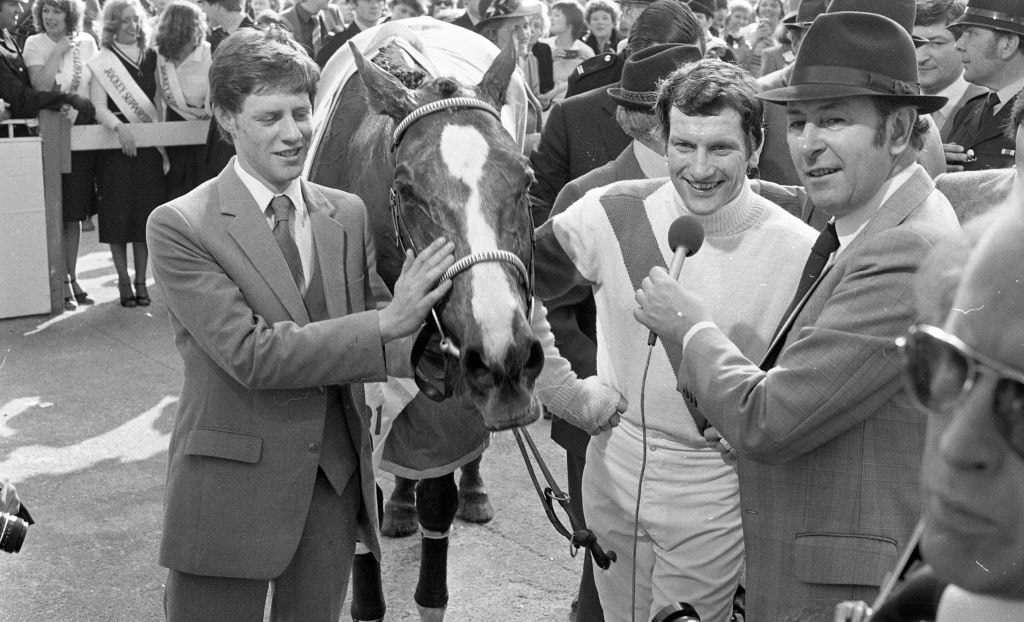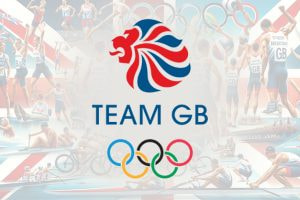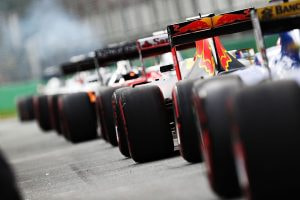The Grand National’s Greatest Stories – A History Lesson
No sporting event compares to the Randox Grand National. A British institution first run in 1836, the marathon horse race now comprises of 34 runners. Its field size is not the only feature that sets the Grand National apart from the Kentucky Derby, Melbourne Cup, Dubai World Cup and other high-profile races staged during major global horse racing Festivals.
Staged at Aintree, close to Liverpool, the Grand National is a unique contest asking horse and rider to compete over a four-mile two-furlong course. Those who complete the distance – almost two circuits of the track – will tackle 30 obstacles during a race that usually takes a little over nine minutes to complete.

Bob Champion and Aldaniti came back from the brink to win the 1981 Grand National. ©Gettyimage
In 1977, Red Rum created history by winning the Grand National for a third time. In 1981, Aldaniti and jockey Bob Champion pulled on the heartstrings of the nation by overcoming life-threatening injury and cancer to win the famous race. 1992’s Grand National took place five days before a UK General Election – the race was won by a horse called Party Politics!
Millions Love the National Romance
Somehow, the Grand National never fails to throw up an incredible story. And its history is truly remarkable. For example, few would know Gatwick Airport was once a racecourse that staged a substitute Grand National for three years during World War I. And few would believe a Ferrari Formula One racing driver – who finished second in the British Grand Prix – rode in the National twice.
These are just two pieces of romantic history that conspire to make the Grand National a race the public embraces with such enthusiasm that one-third of the UK adult population (around 13 million people) bet on it every year. Here, we have assembled a selection of amazing Grand National facts and some of its charming stories.
What’s in a Name? Plenty at Aintree!
Over the years, many of the Grand National fences have been given names. One of the most famous obstacles is Becher’s Brook. It took its name from Captain Martin Becher, who fell there from his mount, Conrad, in 1839’s first official Grand National, and he took shelter in the brook to avoid oncoming rivals.
Another renowned fence on the Aintree circuit is The Chair. It earned its name from a chair once situated alongside the fence that was occupied by a steward/judge. The Chair, at five feet two inches, is the highest fence on the course. It has a six-foot-wide open ditch on its take-off side.
This obstacle is jumped only once during the race (as the fifteenth fence). It was the site of the Grand National’s only human fatality when Joe Wynne lost his life in 1862. Wynne did leave Aintree alive but died a few hours later in the nearby Sefton Arms Pub.
Possibly the most recognisable Aintree obstacle is Foinavon – a fence jumped twice as the seventh and 23rd. Relatively small – four-foot six-inches high – it earned notoriety in 1967 when there was a mass pile-up at the obstacle. Only one horse, Fionavon, managed to avoid the melee and scramble over it. He went on to win the race at odds of 100/1 – the joint biggest winning price in National history.
Virtual COVID National Was a Charity Winner
In 2020, the biggest horse race in the world – based on the 600 million people that normally watch it live – was cancelled due to the Covid-19 pandemic. In addition to its unique spectacle, the Grand National is also a massive gambling event, and, like most businesses at the time, online bookmakers were keen to weather the storm.
Bookies, broadcaster ITV, and a production company combined to make an animated virtual Grand National – based on the horses that were due to run in the contest – that the public could bet on. All UK online bookmakers limited their stakes to just £10 bets on this virtual contest, which attracted an extraordinary domestic television audience of 4.8 million.
In the event, Potters Corner gave Wales its first ‘winner’ since 1905 at Grand National odds of 18/1. Walk In The Park finished second; Any Second Now – a horse that would finish placed in the next two Grand Nationals – was third, and the 2019 winner, Tiger Roll, was fourth.
The virtual Grand National generated UK profits of £2.6 million, which went to NHS hospital charities. Irish health charities also benefited to the tune of £300,000. Profits could have been higher, but an agreement was made between all bookmakers to keep maximum stakes dialled down to discourage insider trading.
Horsing Around With National Winning Names
Grand National winners named after foodstuffs are the 2018/2019 winner Tiger Roll, L’Escargot (1975) and 1959 scorer Oxo. Coincidence winners include Lottery – who set the tone for many future Nationals when taking the inaugural race in 1839 – 1986’s 50/1 winner Last Suspect, 1991 scorer Seagram (as, coincidentally, Seagram sponsored the race) and Party Politics, who scored days ahead of the 1992 General Election.
This list of National winners named after places is long: Austerlitz, Woodbrook, Drogheda, Drumcree, Kirkland, Jenkinstown, Troytown, Reynoldstown, Bogskar, Kilmore and Montys Pass all have their names on the Grand National Roll of Honour.
Arguably, that list should be even longer. Foinavon and 1980 Grand National winner Ben Nevis were named after Scottish mountains. Corbiere – the first Grand National winner trained by a female – was named after a lighthouse in Jersey. In 2013, the island produced four postage stamps to celebrate the Aintree stalwart’s achievements.
Rachael Scores a First for the Ladies
It took 44 years and 32 attempts, but in 2021, Ireland’s Rachael Blackmore re-wrote the Grand National history books when she became the first female to ride a Grand National winner – the JP McManus-owned Minella Times.
In 1977, Charlotte Brew became the first woman to ride in the race. It was the first year female jockeys were allowed to compete in the Grand National following the passing of the Sex Discrimination Act of 1975. At 200/1, her horse, Barony Fort, was a genuine no-hoper.
Most rides given to women jockeys during the next 20 years were no-hopers. In 1982, Geraldine Rees became the first woman to complete the course – finishing eighth aboard Cheers. But, from 1977 until 1994, this was the only one of the 14 horses partnered by a female rider who completed the course.
The new millennium brought a new generation of female riders, and attitudes towards them had changed significantly. In 2012, Katie Walsh finished third in the Grand National aboard 8/1 joint-favourite Seabass.
Forward wind nine years, and Rachael Blackmore’s triumph aboard Minella Times saw her right so many formbook wrongs. It was the first victory for a woman rider in 33 attempts. Still, given that 40 horses had contested the race almost every year, mathematically, a female-ridden Grand National winner was not necessarily overdue.
Red Rum’s and Piggott’s Family Ties
The most horses to set off in a Grand National was 66 in 1929. The field was capped for decades at 40, but in 2024, it was announced the maximum field size would become 34. It should be noted that Red Rum faced 43 rivals when winning his first two Grand Nationals in 1973 and 1974.
No National factorial would be complete without mention of the greatest Grand National winner, Red Rum, who, in addition to winning the race three times, finished second on another two occasions. Remarkably, he never made an error at any of the 150 Aintree fences he tackled.
Red Rum and his lad Billy Ellison on the streets close to his Southport stables pic.twitter.com/pNzXGqX7eX
— Sports & Betting History by BestBettingSites (@CDCHistory) April 6, 2021
Many racehorses are named after their dam and sire. Red Rum was no different; his sire was called Quorum, and his dam was a mare called Mared. Famously, he was bred to be a miler on the flat and was twice ridden by the legendary Lester Piggott as a youngster.
Piggott, winner of 30 classics and renowned for his remarkable sporting comeback in 1990, had a close association with the Grand National. As a flat-race jockey, he never contested the National, but his father, Keith, trained Ayala to win the famous race in 1963. Furthermore, Lester’s grandfather, Ernie, rode three National winners between 1912 and 1919.
The Famous Stunts Pulled at Aintree
There are way too many Grand National stories to recount. For the record books, the oldest rider to complete the National was 68-year-old Tim Durant. A stunt rider in Westerns, he finished 15th in 1968. The oldest winning rider was 48-year-old amateur Dick Saunders on Grittar in 1982. A year earlier, 54-year-old John Thorne had finished second.
Of course, there have been dark days. In 1993, the race was declared void after a shambolic start, but only after some jockeys raced the entire National distance. In 1997, there was a bomb scare, meaning the course had to be evacuated, and the race was eventually run on a Monday.
It is amazing to think that much of this wonderful history would have never happened had Ladbrokes not stepped in to save the Grand National during the mid-1970s. The bookmaking firm took the baton when the owners of Aintree Racecourse were planning to sell what had become a dilapidated venue for housing development.



